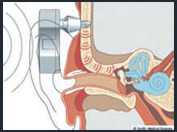

Consultant ENT Surgeon, Micro Ear & Endoscopy Skull Base Specialist
Leading Cochlear Implant Surgeon
 +91 9377034673
+91 9377034673
Leading Cochlear Implant Surgeon







Dr. Lav B. Selarka is a Accredited Consultant Ear Nose & Throat Specialist and also Over 10 years clinical experience. Established independent ENT department at Zydus Hospital in Ahmedabad since 2015. Dr. Lav B. Selarka Skilled in general otolaryngology, adults and children and also Special interests in otology, rhinology, endoscopic skull base surgery, snoring and cochlear implant surgery.
Read more

2025 © Copyright Dr.Lav B.Selarka.All Rights Reserved. Design By City Business Group 